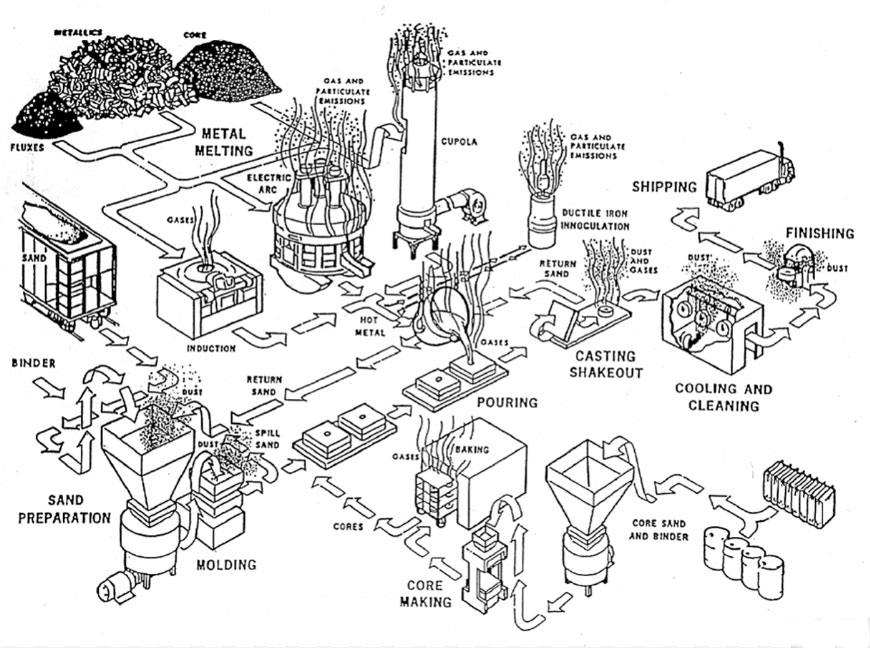
Sand casting plays a crucial role in automotive engineering, driving innovation forward by providing cost-effective and efficient solutions for producing various components and parts in the automotive industry. It enables the manufacturing of critical automotive components with complex geometries, contributing to vehicle performance, safety, and efficiency. Here’s how sand casting parts are driving innovation in automotive engineering:
1. Engine Components:
- Sand casting is used to produce engine blocks, cylinder heads, and other critical components in the engine assembly.
- It allows for intricate cooling passages, oil galleries, and precise tolerances, optimizing engine performance.
2. Transmission Components:
- Sand casting is employed in producing transmission cases, gearboxes, and other drivetrain components.
- The process accommodates complex internal shapes and precise gear tooth profiles, ensuring smooth and efficient power transfer.
3. Suspension Parts:
- Sand casting is utilized for manufacturing suspension components such as control arms, knuckles, and steering components.
- The process allows for lightweight yet durable designs, contributing to improved handling and ride comfort.
4. Exhaust Manifolds:
- Sand casting is employed in producing exhaust manifolds, which require heat resistance and intricate shapes to optimize exhaust gas flow.
5. Braking System Components:
- Sand casting is used for manufacturing brake calipers, providing the necessary strength and precision for reliable braking performance.
6. Differential Housings:
- Sand casting is employed to produce differential housings, essential for transferring power to the wheels while enabling differential action.
7. Chassis Components:
- Sand casting contributes to the production of various chassis components, such as brackets and subframes, ensuring structural integrity and safety.
8. Lightweighting Initiatives:
- Sand casting allows for lightweight design possibilities, an essential aspect of automotive engineering to improve fuel efficiency and reduce emissions.
9. Prototype Development:
- Sand casting facilitates the rapid prototyping of automotive components, enabling engineers to test and validate designs quickly.
10. Customization and Adaptability:
- Sand casting enables customization and adaptation of parts to meet specific vehicle requirements and design changes.
11. Cost-Effectiveness:
- Sand casting offers cost-effective production solutions for automotive manufacturers, especially for low to medium production volumes.
Sand casting’s versatility, cost-effectiveness, and ability to produce complex shapes have made it an indispensable manufacturing process in automotive engineering. As the automotive industry continues to innovate and evolve, sand casting will remain a driving force, providing efficient and reliable solutions for creating critical components that enhance vehicle performance, safety, and sustainability.
